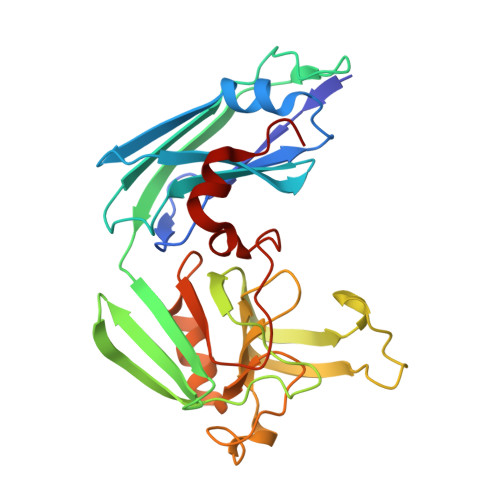Binding and processing of beta-lactam antibiotics by the transpeptidase LdtMt2 from Mycobacterium tuberculosis.
Steiner, E.M., Schneider, G., Schnell, R.(2017) FEBS J 284: 725-741
- PubMed: 28075068
- DOI: https://doi.org/10.1111/febs.14010
- Primary Citation of Related Structures:
5LB1, 5LBG - PubMed Abstract:
β-lactam antibiotics represent a novel direction in the chemotherapy of tuberculosis that brings the peptidoglycan layer of the complex mycobacterial cell wall in focus as a therapeutic target. Peptidoglycan stability in Mycobacterium tuberculosis, especially during infection, relies on the nonconventional peptide cross-links formed by l,d-transpeptidases. These enzymes are known to be inhibited by β-lactams, primarily carbapenems, leading to a stable covalent modification at the enzyme active site. A panel of 16 β-lactam antibiotics was characterized by inhibition kinetics, mass spectrometry, and x-ray crystallography to identify efficient compounds and study their action on the essential transpeptidase, Ldt Mt2 . Members of the carbapenem class displayed fast binding kinetics, but faropenem, a penem type compound showed a three to four time higher rate in the adduct formation. In three cases, mass spectrometry indicated that carbapenems may undergo decarboxylation, while faropenem decomposition following the acylation step results in a small 87 Da β-OH-butyryl adduct bound at the catalytic cysteine residue. The crystal structure of Ldt Mt2 at 1.54 Å resolution with this fragment bound revealed that the protein adopts a closed conformation that shields the thioester bond from the solvent, which is in line with the high stability of this dead-end complex observed also in biochemical assays. Structural data are available in Protein Data Bank under the accession numbers 5LB1 and 5LBG.
- Department of Medical Biochemistry and Biophysics, Karolinska Institutet, Stockholm, Sweden.
Organizational Affiliation:

















